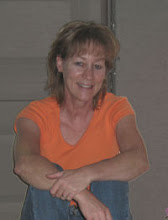Aug
17
 Pyrography makes for a unique display with its varying sepia values. Adding color is strictly a personal preference and has no rules. What to use? Oil, acrylic or watercolor paint? Oil, or wax colored pencils? Stains, washes or dyes? The interaction between the wood, the color and the pyrography does have an impact as each entity within themselves react a different way with the other in terms of absorbency, transparency and compatibility. This would be another fun area in which to experiment and practice. See what combinations you like best and go with it. I just recently started using colored pencils and fell in love with the result, so I have not tried anything else...Yet.
Pyrography makes for a unique display with its varying sepia values. Adding color is strictly a personal preference and has no rules. What to use? Oil, acrylic or watercolor paint? Oil, or wax colored pencils? Stains, washes or dyes? The interaction between the wood, the color and the pyrography does have an impact as each entity within themselves react a different way with the other in terms of absorbency, transparency and compatibility. This would be another fun area in which to experiment and practice. See what combinations you like best and go with it. I just recently started using colored pencils and fell in love with the result, so I have not tried anything else...Yet.
For the final step, I spray on a coat or two of an acrylic, clear matte finish. This not only protects your woodburnings against fingerprints and dust, it also protects it against mildew (which can be brought on by high humidity). Matte or satin finish is preferred because it doesn’t create a glare and distract from your woodburning.
Pyrography can fade in strong direct artificial or natural light. To help prevent this, place in indirect, diffused light. I also choose my acrylic finish with a UV-Resistant which definitely helps protect against harmful ultraviolet light rays.






